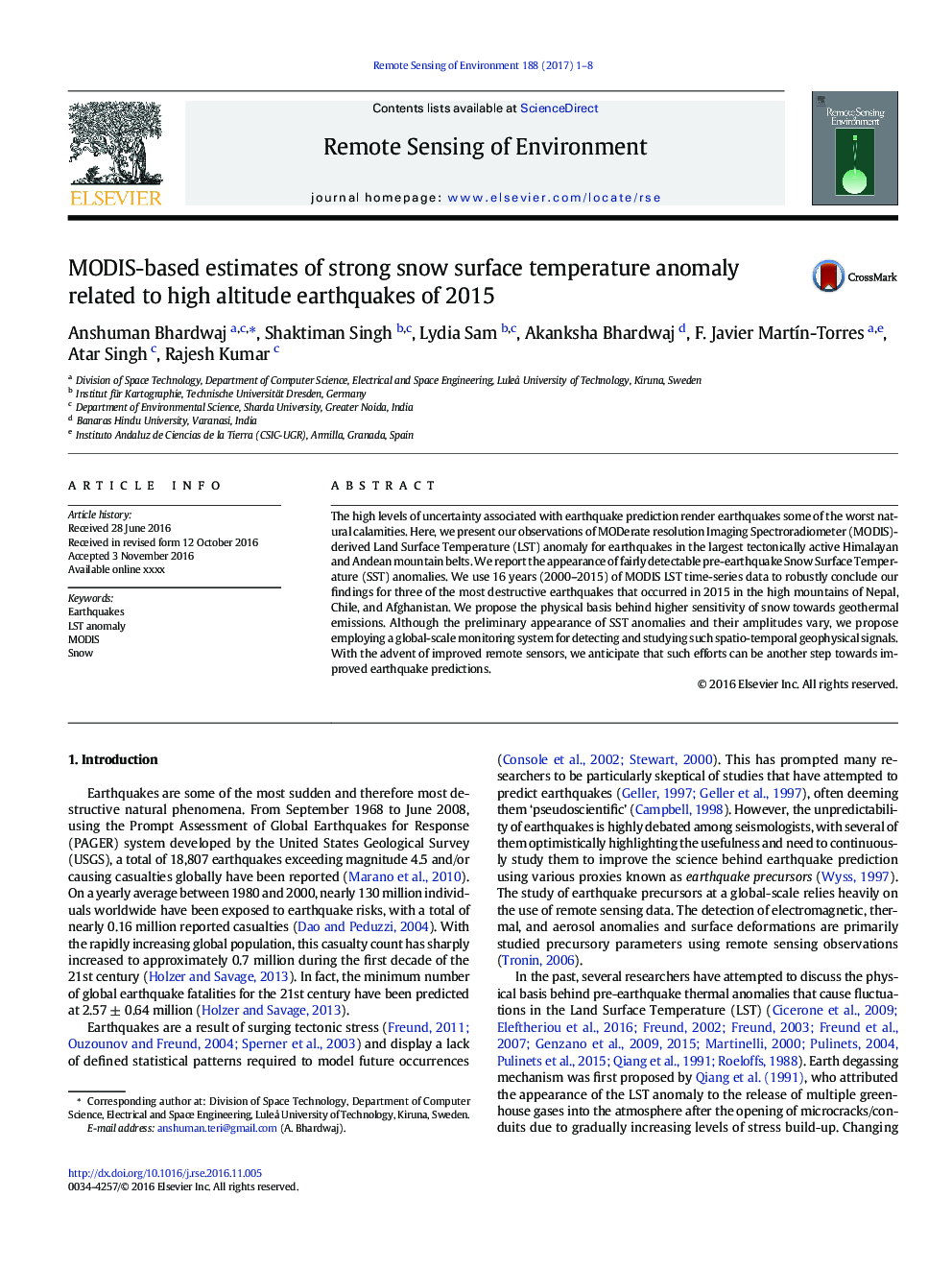| Article ID | Journal | Published Year | Pages | File Type |
|---|---|---|---|---|
| 5754749 | Remote Sensing of Environment | 2017 | 8 Pages |
Abstract
The high levels of uncertainty associated with earthquake prediction render earthquakes some of the worst natural calamities. Here, we present our observations of MODerate resolution Imaging Spectroradiometer (MODIS)-derived Land Surface Temperature (LST) anomaly for earthquakes in the largest tectonically active Himalayan and Andean mountain belts. We report the appearance of fairly detectable pre-earthquake Snow Surface Temperature (SST) anomalies. We use 16Â years (2000-2015) of MODIS LST time-series data to robustly conclude our findings for three of the most destructive earthquakes that occurred in 2015 in the high mountains of Nepal, Chile, and Afghanistan. We propose the physical basis behind higher sensitivity of snow towards geothermal emissions. Although the preliminary appearance of SST anomalies and their amplitudes vary, we propose employing a global-scale monitoring system for detecting and studying such spatio-temporal geophysical signals. With the advent of improved remote sensors, we anticipate that such efforts can be another step towards improved earthquake predictions.
Keywords
Related Topics
Physical Sciences and Engineering
Earth and Planetary Sciences
Computers in Earth Sciences
Authors
Anshuman Bhardwaj, Shaktiman Singh, Lydia Sam, Akanksha Bhardwaj, F. Javier MartÃn-Torres, Atar Singh, Rajesh Kumar,
